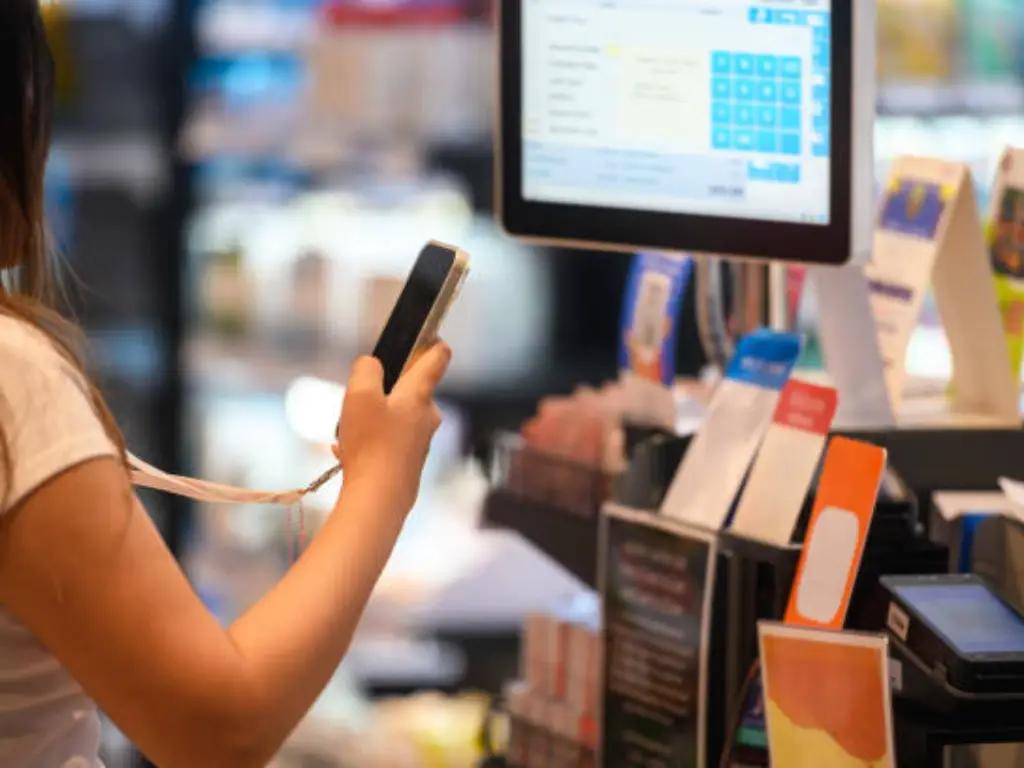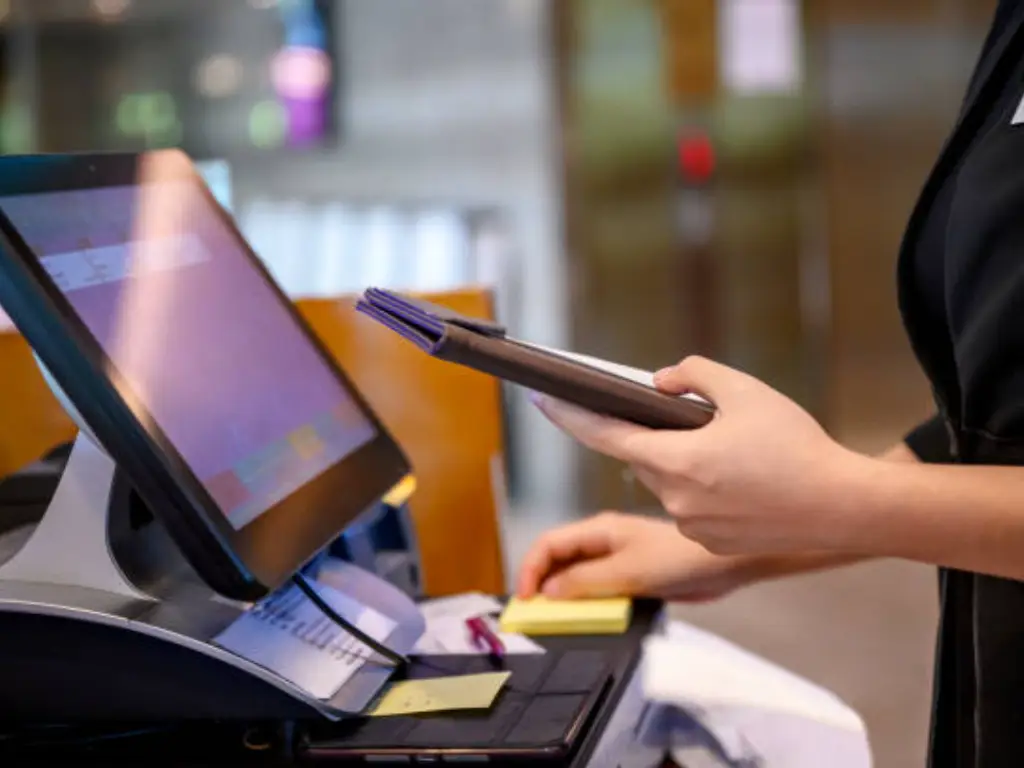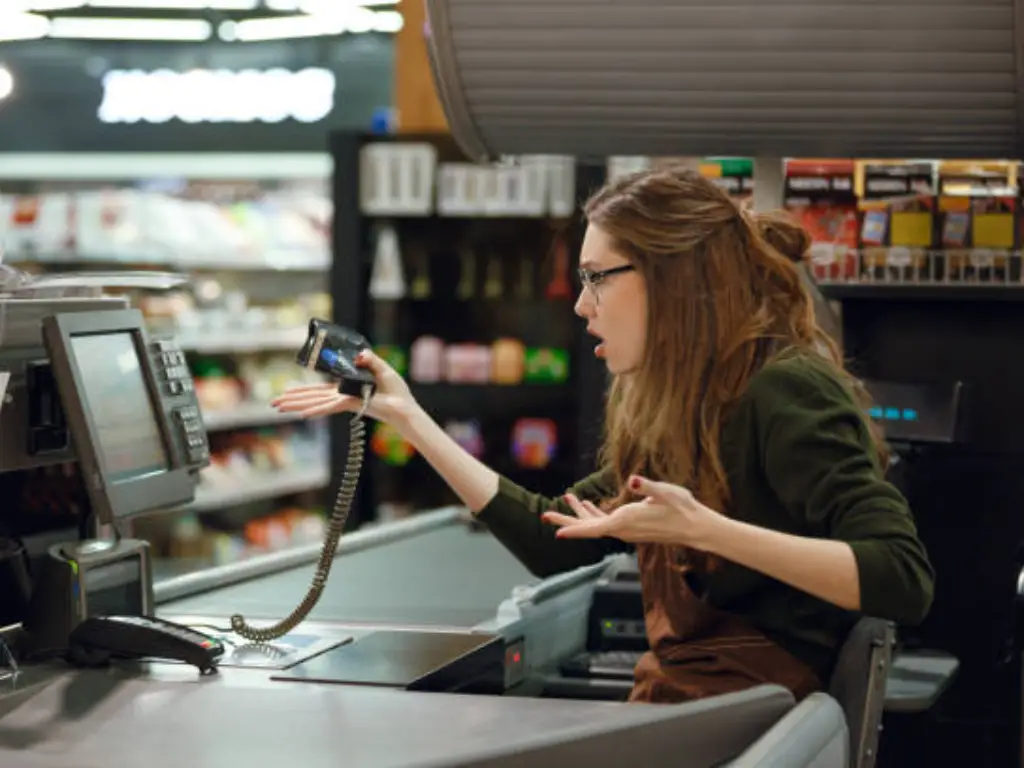The choice of the best POS system is one of the most important decisions that a retailer will make. In the current competitive environment, a POS is not a cash register anymore, where credit card transactions are processed. It is the nervous system of your whole retail business- the hub of sales, sophisticated inventory control, customer information, and employee management. An intelligent selection of a system will open up deep efficiencies and customer satisfaction, and a bad one can be the daily source of friction and a bottleneck to improvement.
This guide aims to demystify the selection process. We will go beyond feature lists at the surface level to give you a strategic framework to assess your future needs, the right technology, and the actual value of your investment. This systematic way of doing it will help you choose a POS system that will not only fit your present needs but will also become a scalable platform in the future.

First, Assess Your Unique Retail Needs
You need to develop a comprehensive blueprint of your own operational reality before you even consider single-feature or pricing page comparisons. A POS system is not a universal solution; the systems of a high-volume grocery store and a boutique shop are essentially different. The most important, but most frequently ignored, part of the process is a thorough self-assessment.
To create your own customized needs profile, take into account the following dimensions:
Your Retail Category
The nature of your business dictates specific functional requirements.
- Apparel & Fashion: You will need to have functionality to handle variants such as size, color, and style. Another crucial thing is the possibility to manage complicated returns and exchanges gracefully.
- Grocery & Food: Look for systems that support items sold by weight, integrated scales, and advanced inventory management for perishable goods.
- Electronics: The ability to manage products that have serial numbers to track and provide warranty on is a must-have feature.
- Beauty & Cosmetics: A unique feature that can make a difference is the possibility of creating gift sets with products and scheduling the appointment for in-store services.
Business Scale & Transaction Volume
The robustness of the system and its scalability is directly dependent on the size of your operation.
- Daily Transaction Count: Do you have tens or hundreds of thousands of sales a day? The high-volume environments require fast processing and the offline functionality to guarantee the continuity of business even when the internet connection fails.
- Peak Hours: Study your peak times. Your POS should be able to work perfectly under pressure without slowing down and annoying customers and employees.
Store Footprint (Single vs. Multi-Store)
Your physical presence is what determines your management requirements.
- Single Store: A simple configuration might be adequate, but you need to look at the future.
- Chain/Franchise: In case of several locations, it is critical to have centralized management. You require a system that will be able to synchronize inventory, sales data, and customer data across all the stores in real time. The capability to control pricing and promotions at a central head office and push it to all sites is a huge operational benefit.
Sales Channels (Omnichannel Requirements)
The contemporary consumer makes purchases in various touchpoints.
- Brick-and-Mortar Only: Your focus will be on in-store performance and efficiency.
- Brick-and-Mortar + E-commerce: This is the most typical case of growth retailers. Your POS should become part of your online store (e.g., Shopify, WooCommerce). Such integration ought to automate higher levels of inventory management to avoid selling out-of-stock products on the internet and integrate sales across all channels into one unified report.
By carefully recording your needs in these four areas, you establish a strong sieve. You are now ready to go into the market with a clear checklist that will enable you to reject unsuitable systems fast, giving you time to concentrate on those that are aligned with your business.
Decoding Must-Have POS System Features
Having a profile of your needs, you are ready to start assessing the main capabilities of a POS system. Although the list of possible features might appear to be infinite, they can be categorized into a few key areas that directly influence your efficiency and profitability.

Seamless Payment Processing
This is the basic role. A contemporary system should be flexible and secure. It must accept all payments: credit cards (chip, swipe, and tap-to-pay), EMV chip cards, mobile wallets (Apple Pay, Google Pay), and other digital payment methods without any difficulties. Review the card processing fees critically. Is it a simple flat, predictable rate or a more complicated interchange-plus model? Make sure that the provider is entirely PCI compliant to keep your business and your customers safe against data breaches.
Intelligent Inventory Management
Inventory tracking is important to any retailer. Poor management is directly proportional to loss of sales and capital wastage. Your inventory control center should be a powerful POS, which provides:
- Monitoring in real-time of all places and online.
- Low-stock reminders that send you an automatic reminder when it is time to replenish.
- Automation of the purchase order creation to ease replenishment.
- Product variants, bundles, and composites support.
- Stock counting tools and tools to identify differences in inventory.
Actionable Reporting and Analytics
One of the greatest resources that a modern POS can offer is data. Raw data is meaningless; you require a system that converts sales data into meaningful, actionable data. Seek a system that has a dashboard that can be customized to enable you to monitor:
- Day-to-day, weekly, or seasonal sales trends.
- Hottest (and not so hot) sellers.
- Employee sales performance.
- Identify customer information like spending patterns and lifetime value.
Such reports enable you to make informed decisions based on data regarding your business, such as purchasing, marketing, and staffing.
Customer Relationship Management (CRM)
A healthy retail business lives on repeat customers. A unified CRM enables you to create and develop customer relationships. On the simplest level, it must enable you to develop customer profiles that monitor past purchases. Further developed systems allow you to develop customer loyalty programs, offer specific discounts, and contact your customers either by email or SMS, transforming occasional purchasers into brand loyalists.
Employee Performance Tracking
A reliable POS system enables you to control your most valuable asset: your team. Crucial capabilities are secure clock-in/clock-out and role-based permission that enables you to manage access to sensitive capabilities (such as processing voids or discounts). Employee-level sales reports can also assist you in determining who your best salespeople are and what you can do to coach the rest of your team.
Beyond Transactions: Building Your Connected Ecosystem
A modern POS does not work in a vacuum. It is an open platform, a central hub, which interconnects with other key business tools to form a smooth and extremely efficient operational environment for small businesses. The importance of this connectivity is hard to overestimate; it automates the work processes, avoids the duplication of information entering, and gives a comprehensive picture of the performance of your type of business.
The most typical and necessary integrations are accounting software and e-commerce systems. Linking your POS with QuickBooks or Xero, to give a few examples, automates the process of daily sales data directly into your bank account and saves you an uncountable number of hours of manual bookkeeping and the possibility of human error. Likewise, a seamless connection with your Shopify or other online shop is the key to any effective omnichannel strategy, making sure that tracking inventory and customer information always go hand in hand.
Yet, to retailers interested in reaching the next stage of in-store efficiency, the ecosystem is not limited to software, but to the checkout counter itself.

The Next Level of Automation: POS and ESL Integration
It is one thing to manage your inventory in the POS, but how do you make sure that the price you have on your shelves is the same price you have in your system in real-time and at the right price? Manual labor has been the solution to this question over the last decades: printing paper labels, locating the related products, and physically removing the old tags. This is a time-wasting, inefficient, and error-prone process that is a constant headache to staff and customers.
This is where the integration of Electronic Shelf Label (ESL) transforms the retail business. When you connect your POS with a network of digital labels on your shelves, you get a fully automated pricing process. Consider having a flash sale, a store-wide sale, or merely a regular price change. An integrated system means that you change the price in your POS once, and in a matter of seconds, all the associated shelf labels in your entire store are updated automatically, and with complete accuracy.
This is the ability that opens enormous value:
- Removes Manual Work: It saves thousands of man-hours that were used to change paper labels manually.
- Ensures Price Accuracy: It eliminates pricing errors at the shelf and at the checkout counter to enhance customer trust and customer satisfaction.
- Supports Dynamic Pricing: It supports dynamic pricing such as happy hours, daily deals, or price matching competitors, which simply cannot be done with manual processes.
To access this degree of automation, your point of sale should be linked to a superior ESL provider. As an example, Zhsunyco has been using open protocols such as MQTT to develop a responsive and potent retail environment. The collaboration offers a full solution through one expert source, comprising powerful hardware and advanced software, which can be licensed once at a nominal fee. This not only changes the integration into a mere feature but also into a major investment that will directly increase your operational efficiency, staff productivity, and the overall customer experience. Let us know today and understand how the ESL solutions offered by Zhsunyco can be connected with your POS system.















Decoding Hardware and Software Choices
The hardware and software of your POS system are the instruments that your staff deal with every day. The correct decision is trustworthy, and the incorrect one is one that causes constant technical problems. To get more details on these options, refer to our definitive guide on the types of pos systems for retail. At this point, we should go over the basics.
The most important choice you make is software that meets specific needs. The current trend in the industry is cloud-based software, where you pay a monthly fee and have access to your system via the internet. This will allow you to run your business where you want, and updates are automatic, and strong data security is taken care of by the provider. The other one, an on-premise system, will cost you a lot because it needs a local server at your store and manual maintenance, which is a less flexible and outdated solution that most retailers in the modern world use.
In the case of hardware, you should select what would suit your store in terms of style and requirements. You may choose a sleek iPad-based terminal with a modern appearance and flexibility of mobile checkout, or a rugged, all-in-one classic terminal designed to work in high-volume settings. You will require the following essential peripherals to be able to complete your setup: a stable barcode scanner, a quick receipt printer, a safe cash drawer, and a new card reader that supports all forms of payment types.
The True Cost: Calculating Your POS ROI
The typical error here is to select a POS system just because of the monthly fee without considering its overall financial implications. The most intelligent thing to do is to go beyond the cost price and concentrate on the Return on Investment (ROI).
Although it is important to know all the possible costs, including software and hardware, payment processing, and other hidden costs, the most strategic question is not what will this cost. But what value will this produce?
The investment in a powerful POS system will pay for itself by:
- Labor Saving: Automation of such functions as inventory management or price updates with the use of ESL saves innumerable staff hours.
- Maximizing Sales: Data analytics to maximize your product mix and promotions.
- Increased Loyalty: Developing repeat business with combined CRM and loyalty programs.
By putting it in this light, a system with strong efficiency-enhancing features can be a more profitable long-term investment, even though its upfront cost is greater.
To get a breakdown of all the costs involved, including hardware and hidden costs, see our full breakdown in the POS System Cost: The Essential Guide for Retailers.
Evaluating Vendor Support and Ease of Use
Having the most feature-rich POS system will be of no use when your employees find it difficult to operate or when you do not have quality customer service to call when you have a problem. When it comes to your POS decision, the technical capabilities are as important as the human element. Pay attention to two important things: the way the system feels to use it and the way the vendor supports you.
Prioritize Intuitive Design and Usability
An interface (UI) and user experience (UX) that is easy to learn will save a lot of training time and costly mistakes. In your analysis, you should evaluate the whole work process. The checkout has to be quick and rational, so that employees can quickly apply discounts and search for customers. The back-end management is also essential; new products should be easily added, reports can be run, and inventory should not be a problem to manage daily. A complex system introduces an invisible expense in terms of prolonged training duration, so never forget to question a vendor on the time frame required to onboard a new employee.

Scrutinize the Quality of Customer Support
When your business is down, your system is down. Quality customer support is not an option; it is essential. First, consider their access and avenues. Retail does not end at 5 PM, so the gold standard is 24/7 assistance through the phone, email, and live chat, with phone support being the must-have in case of an urgent problem. Then check their reputation. You should not just trust the promises of the vendor. Look for third-party, independent reviews on a site such as Capterra or G2. Such uncensored customer experiences will provide an accurate idea of how reliable and fast a vendor is when it counts.
Making Your Final Decision with Confidence
You have evaluated your requirements, cracked the features, grasped the prices, and have compared the vendors. Now you have to make your final selection. This final stage of due diligence will ensure that the system you choose on paper performs just as well in the real world.
Use this last checklist to make your decision with no doubts at all:
| Step | Action Item | Purpose |
| Request a Live Demo | Schedule a personalized demonstration with your top 2-3 vendors. Come prepared with a list of specific questions and business scenarios. | To see firsthand how the system handles your most common or complex tasks. |
| Utilize Free Trials | Take full advantage if a free trial is offered. Set it up with a small group of products and have your staff test it in a non-critical environment. | To gauge the system’s real-world ease of use and user experience. |
| Check Customer Reviews | Look for recent, unbiased reviews on independent third-party sites like Capterra or G2. | To understand system reliability, customer support responsiveness, and any unexpected issues or fees. |
| Review the Contract in Detail | Carefully read the Service Level Agreement (SLA) and contract before signing. | To clearly understand cancellation policies, data ownership, payment processing fees, and provisions for price increases. |
When you are systematic and thorough in your final consideration, you eliminate the element of guesswork in the decision. You do not simply purchase a technology, but you select a business partner. This methodical process will make sure that the partner you select will play a key role in your development and success in the years to come.
Conclusion
The process of selecting the right pos system is not a buying process. As we have seen, the right choice goes way beyond different features and charges. It starts with a profound knowledge of your retail requirements, continues with a well-thought-out analysis of fundamental functionality and growth-facilitating integrations, and ends with an unvarnished analysis of the actual payback of your investment.
Keep in mind that it is not only necessary to identify a system that processes transactions. It is to choose a trusted new POS system – a partner that will make your operations efficient, your employees more powerful, and open up important data insights, as well as grow with you. With this kind of strategic approach, you are not purchasing a tool, but you are investing in a strong foundation of your future success.

